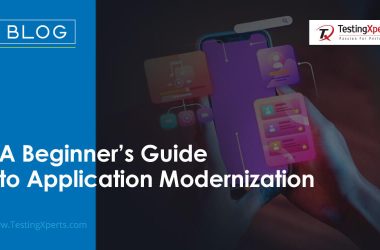- An Overview of Large Language Models (LLMs)
- Why is LLM Evaluation Necessary?
- Factors to Consider When Evaluating LLMs
- Large Language Models Evaluation Challenges
- Best Practices to Overcome LLM Evaluation Challenges
- How can Tx help with Large Language Models Evaluation?
- Why Choose Tx for Generative AI in Finance?
Since the emergence of gen-AI, we have seen a substantial surge in AI technology. The release of various large language models (LLMs), ChatGPT, and other AI solutions shows how big of an impact these tech innovations are making in our lives. However, there’s still a gap in the standardized approach to assessing these models’ quality and reliability. If we talk about LLMs, the evaluation process is still challenging for many organizations. Whether it’s about upscaling the models’ accuracy or deciding on an appropriate set of LLM evaluation metrics, building a robust evaluation pipeline is necessary.
An Overview of Large Language Models (LLMs)

Large language models are the foundation model category trained on huge amounts of data to enable them to understand and generate natural language and perform different tasks. Organizations are investing heavily in this technology to make their numerous business processes faster, cheaper, and more robust.
Many companies have spent almost a decade implementing LLM at different business levels to optimize their NLU and NLP capabilities. LLMs can be considered a supporting mechanism in NLP and AI breakthroughs and are easily available to everyone in the form of OpenAI’s Chat GPT-3.5, Chat GPT-4, and Chat GPT-4o. Other examples include IBM’s Granite model series on Watsonx.ai and Meta’s Llama models.
These models can understand and generate human-like text and create other forms of content by utilizing vast datasets (used by companies to train them). They can even assist in creative writing, code generation, translating languages, answering FAQs, and generating coherent and contextual responses. In short, LLMs are reshaping how users interact with technology, making them a vital component in modern business practices.
Why is LLM Evaluation Necessary?

In the early development stage, it is easy to identify areas for improvement. However, as the technology grows and new versions come, it becomes more complex and difficult to analyze what’s best. This is why a reliable and scalable evaluation framework is a must when judging the quality of LLM evaluations. The need for an authentic evaluation framework becomes crucial in the case of LLM models, which can be deployed in the following ways:
• A proper framework to assess the model’s reliability, usability, safety, and accuracy.
• A comprehensive framework to allow tech companies to release their LLMs more responsibly without simply placing multiple disclaimers on their products to free themselves from responsibility.
• An evaluation framework for users to determine where and how to optimize these models and what type of data to utilize for practical deployment.
Evaluating LLMs is crucial for several reasons, which include:
• Generating accurate and reliable outputs so that they can be trusted for critical applications. Regular evaluations would help identify and correct errors in the models at constant intervals.
• Detecting vulnerabilities that might get exploited by hackers. This would strengthen security in sensitive areas of these models.
• This will enable developers to measure the LLM’s performance, ensure it meets users’ demands, and adapt to new data.
• Ensure AI technologies comply with legal and ethical standards and assist companies in preventing costly legal issues.
• Building user trust in LLM technologies by committing to accuracy, compliance, and security.
Factors to Consider When Evaluating LLMs

• Several key factors are necessary to consider when evaluating large language models. Some of them are given below:
• One primary factor is checking how fast the model produces results, especially during critical use cases. Rapid action teams need quicker models that can give faster responses to resolve project-critical queries.
• Make sure to check for biasedness, as LLM should be free from biases related to race, gender, color, place, politics, religion, and other factors.
• Guardrails are a must for AI-based solutions. Companies should invest in these measures to make LLM responses safe for users and take responsibility if there’s a problem.
• IQ metrics are used to judge whether human intelligence can be integrated into systems. EQ is another method used to evaluate LLMs. The higher the EQ, the safer the LLM is for users.
• The system must be updated constantly so that it can contribute more and generate better results.
• There must be consistency in the responses generated by LLMs. Similar prompts must generate identical results to ensure the quality of the product.
• It is crucial to ensure the accuracy of LLM results, which includes fact correctness and the authenticity of assumptions and solutions.
Large Language Models Evaluation Challenges

• Before starting with LLM evaluation best practices, let’s look at some of the changes that may arise during this process:
• Data contamination causes inaccurate assessments during the LLM evaluation process, resulting in degraded quality and integrity of evaluation data.
• Relying heavily on perplexity leads to low understanding and generation of outputs, resulting in biased evaluations.
• Human evaluations introduce inconsistency and make maintaining objectivity challenging when evaluating LLM performance.
• Limited data available for reference may hinder detailed evaluation, which could cause problems for models dealing with specific languages or domains.
• Lack of diversity in evaluation metrics causes difficulties in assessing LLMs’ adaptability, responses, and creativity.
• Using a controlled environment to evaluate LLMs may hinder their real-world performance, where they must handle dynamic and unstructured inputs.
• Evaluating the robustness of LLMs against adversarial attacks is a challenging task in the evaluation process.
Best Practices to Overcome LLM Evaluation Challenges
To effectively manage the above-mentioned challenges, the following are some of the best practices that businesses should implement:
• Draft a wide range of tests covering every aspect of LLM’s functionality, which includes scenario-based evaluation, stress tests, and performance benchmarks.
• Ensure there’s transparency in training data sources to maintain the accuracy and trustworthiness of LLMs.
• Utilize automated metrics and human evaluation in sync to capture errors and accurate outputs in LLM evaluation responses.
• Implement continuous monitoring protocols to detect and address issues as they are identified. This would maintain the model’s security and reliability.
• Review the regulatory policies and standards for LLM deployment regularly to ensure they align with the latest ethical implications and societal norms.
• Use real-world scenarios and inputs to measure the practical implementation of LLM evaluation frameworks.
• Conduct rigorous evaluations, including adversarial testing, to gauge LLM resistance toward potential security vulnerabilities and malicious inputs.
How can Tx help with Large Language Models Evaluation?
Organizations require a solid understanding of LLMs to harness their full potential and transform how they do their business. This means having access to the latest AI-based evaluation/testing tools and technologies to ensure LLMs’ trustworthiness, transparency, and security. Ensuring its governance and traceability are also crucial aspects that Tx brings to its clients, such as monitoring and handling AI processes efficiently. Tx-Secure, Tx-Insights, and Tx-HyperAutomate are some of our in-house accelerators to ensure your AI models are well-monitored and secure during pre- and post-implementation stages. Our tailored evaluation strategies ensure your LLMs perform optimally in their intended environment.
Summary
The large language models are transforming the NLP domain. However, evaluating the quality still requires a standardized, robust, and comprehensive evaluation method. It’s not an obligation but a necessity to evaluate LLMs to leverage their full potential in various industries. Tx, at the forefront of digital engineering and QA, actively contributes to AI solutions testing. We assist our clients in providing solutions to complex support issues via Chatbots, support financial institutions with fraud analysis and anomaly detection, and much more. Contact our AI experts to learn how Tx can assist with evaluating and testing LLMs.
The post Evaluating Large Language Models (LLMs): Key Factors to Consider first appeared on TestingXperts.





